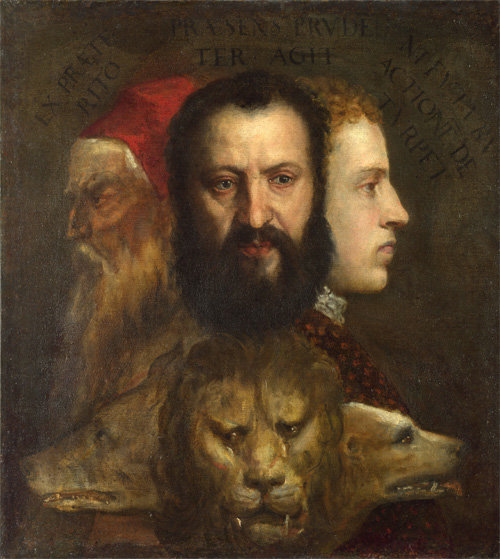The monster of time
The monster of time
Posted November. 05, 2020 07:42,
Updated November. 05, 2020 07:42

It is a very peculiar painting. The heads of three men are physically joined but all looking in different directions. A long-bearded old man is on the left, while a middle-aged man with a thick beard is in the middle. On the right is a young and handsome blond man. Below the men are the heads of three animals, drawn in the same direction of the men. Is it a painting of three men, or a monster with three heads? Why are the animals depicted? For what reason has the artist drawn such a mysterious painting?
Titan was known as one of the most famous painters not only in 16th-century Venice but also well-known internationally. He was skilled in painting religious, mythological, nude paintings and portraits, requested for paintings by Charles V, Holy Roman Emperor, and leaders all over Italy. This painting was drawn in the later years of his life, comparing the three stages of live to animals. The bright right symbolizes youth, while middle age takes the center. The left refers to older years. The dog of youth represents loyalty and lack of matureness, the lion courage and strength, the wolf greed and slyness. Why did the artist refer to old age, which could have been valued for its experience and skills, to a sly wolf? Perhaps the latin phrase written in the upper part of the painting can be a hint: "from the experience of the past, the present acts prudently, lest it spoil future actions." The message advises to take heed from the mistakes of the past to act prudently and wisely as not to spoil the future with greed.
Unlike its title, Allegory of Prudence, the painting is often interpreted as a symbol for sin and repentance. Some say that the face of the old man takes after the artist, meaning that the artist is repenting for his carelessness and faults of the past. But we all make mistakes and do wrongdoings in life. Instead of repenting, some opt to rationalize their misconduct. Moreover, humans are prone to oblivion, particularly the wrongdoings of past. Perhaps the artist wished to convey the message that we should not become time monsters oblivious to our past.







